Musée du Vieux Parfum de Bukchon (북촌생활사박물관)
18.0Km 2021-03-27
90, Bukchon-ro 5na-gil, Jongno-gu, Seoul-si
+82-2-736-3957
Le Musée du quotidien de Bukchon expose des objets ayant été colléctés à Bukchon, village historique autrefois réservé à la noblesse. Pendant des centaines d’années, de vrais trésors dans chaque résidence furent légués de générations en générations mais depuis le développement rapide de la Corée, dans la seconde moitié du 20ème siècle, certains sont devenus obsolètes. Ouvert en 2003, le musée cherche à préserver des artéfacts en les présentant dans un environnement intime et accueillant où vous pouvez découvrir comment ils étaient utilisés au quotidien.
Les groupes de 10-15 personnes peuvent participer à des programmes leur permettant de fabriquer des objets traditionnels ou à des programmes pour prendre part à la réalisation de ssukgaetteok (gâteau de riz à base d’armoise).
Près du musée se trouvent de nombreuses attractions : le Village Hanok de Bukchon, le Parc Samcheong, le Musée des Hiboux, le Musée ToyKino, Musée des Bijoux du Monde, et le Musée des Palais Nationaux de Corée sans oublier les palais royaux comme celui de Gyeongbokgung.
Parc Marronnier (마로니에공원)
18.0Km 2021-07-14
1-121, Dongsung-dong, Jongno-gu, Seoul-si
+82-2-2148-4158
Au centre du parc Marronnier on trouve un marronnier symbolique (marron d’Inde) alors que le quartier propose différents centres cultures pour profiter d'événements en plein air mais aussi expositions. Cette zone a commencé à se développer en 1975, lorsque l’Université Nationale de Séoul a déménagé alors que quelques 50 petits théâtres et plusieurs centaines de cafés se sont installés s dans ce quartier ont fait de cet endroit pour en faire un lieu de rencontres.
Quartier Daehangno (Quartier Universitaire) (대학로)
18.0Km 2021-02-02
12 Hyehwa-ro, Jongno-gu, Seoul-si
+82-2-2148-1114
La Rue Daehangno, connue comme la rue des jeunes gens, est l’ancien emplacement de l’Université National de Séoul. Depuis les années 1980, beaucoup de théâtres de jeu ont commence à se déplacer à la Rue Daehangno, et ils ont commencé à y développer un centre culturel. Bientôt, des cafés, des movie théâtre, et des pubs s’y sont installés également, et elle s’est agrandie comme un district de divertissements. Sa popularité est encore maintenue grâce à de petits théâtres fameux comme le Théâtre Parangsae (Oiseau Bleu) et le Théâtre Hakjeon ainsi que 30 théâtres additionnels qui se sont groupés ici et contribuent à la Rue Daehangno qui reste comme le centre des racines de performances artistiques en Corée.
Le centre de Daehangno, le Parc Marronnier, a fréquemment des performances en direct ou des représentations de danses faites par les jeunes gens. C’est la raison pour laquelle la Rue Daehangno est appelée “La Mecque des Jeux” ou encore “Rue de la Jeunesse”.
Une autre raison pour laquelle la Rue Daehangno est devenue si populaire pour les jeunes, ce sont les beaux paysages et la diététique intéressante qu’on peut y trouver. Beaucoup de restaurants, chaînes de fast food, cafés et bars y sont regroupés, et augmentent la facilité pour les jeunes gens de faire quelque chose après avoir joué. Son unique atmosphère et espace est encore beaucoup aimée par un grand nombre de jeunes.
Samcheongdong Sujebi (삼청동수제비)
18.0Km 2019-06-13
101-1, Samcheong-ro, Jongno-gu, Seoul
+82-2-735-2965
Get off the subway at Gyeongbokgung Station (Subway Line 3), follow the wall of the Gyeongbokgung Palace and you'll find yourself facing a street with majestic trees whose foliage changes every season. This street leads directly to Samcheong-dong. As you enter Samcheong-dong and walk towards the Samchong-dong Tunnel, you'll come across Samcheongdong Sujebi, located right next to the Prime Minister Legation.
Samcheongdong Sujebi became a hit among Japanese tourists, after being featured in a popular Japanese magazine. The main dish here is, of course, sujebi (a traditional Korean soup consisting of chunks of dough and various vegetables). It comes in a pot full of sliced pumpkin, clams, and potatoes. This delicious soup is so tasty that there's almost always people lined up outside the restaurant. Other popular items include dongdongju (traditional Korean liquor) and gamjajeon (a Korean potato pancake that uses only potato starch and no other ingredients).
Bukchonmaru hanok guesthouse [Korea Quality] / 북촌마루한옥게스트하우스 [한국관광 품질인증]
18.0Km 2020-09-10
152, Changdeokgung-gil, Jongno-gu, Seoul
+82-10-3253-8751
Bukchonmaru Hanok Guesthouse is located between “Bukchon Views 2 and 3” on a hill in Bukchon Village in Seoul. This two-storied hanbok building with a terrace, which is rarely found among other hanok structures in the area, offers a splendid view of Seoul. In particular, the summit of a hill next to the main gate of Choong Ang High School where the guesthouse is situated is known as the filming location for the famous Korean TV series Winter Sonata (2002). When you open the main gate and go up to the first floor, a small yard is seen with a group of jars on one side. After entering the sliding door through the yard, there is daecheong maru (main floored room) that features the doors opening in all directions and a high ceiling with rafters, making the space open and cozy. The hanok building consists of two floors – the ground floor is equipped with special furniture, a jar table and a log chair made by the owner, and on the first floor are guestrooms comprised of one large room and two small rooms. The neat and clean rooms are designed in a simple way and have lovely bedding with the pattern of five cardinal colors. Its staff members can speak English and Chinese to communicate with guests from other countries. Every morning, guests engage in animated conversation while enjoying a Korean home-style breakfast prepared by the owner in a friendly atmosphere. After having breakfast, if guests want, they can try on traditional Korean clothes (hanbok) and take photographs inside and around the guesthouse to create interesting memories. The guesthouse also provides a hanbok rental service (KRW 30,000 for a day) and tourists wearing traditional Korean clothes can enter both Changdeokgung Palace and Gyeongbokgung Palace, which can be reached on foot within 10 to 15 minutes, free of charge. Moreover, guests can enjoy an open view of the area including Gahoe-dong, Gye-dong and even the lights of the Namsan Seoul Tower at night from the roof top.
CAFÉ TERRACE (카페테라스)
18.0Km 2021-03-26
102-2, Samcheong-ro, Jongno-gu, Seoul
+82-2-723-8250
It is a café that serves delicious waffles. This cafe is located in Jongno-gu, Seoul. The representative menu is waffle.
Dialogue in the Dark – Bukchon (어둠속의대화 북촌점)
18.1Km 2025-07-04
Gahoe-dong, Jongno-gu, Séoul (Corée du Sud)
Située près du palais Gyeongbokgung, Dialogue in the Dark – Bukchon est une exposition participative sensorielle unique qui se déroule dans l’obscurité totale pendant 100 minutes. Accompagnés par un·e Roadmaster, les participants explorent différents environnements uniquement à travers les sens du toucher, de l’ouïe, de l’odorat et du goût.
Créée en Allemagne en 1988, cette exposition internationale a été présentée dans plus de 161 villes à travers le monde, touchant plus de 12 millions de visiteurs en Europe, en Asie et en Amérique.
Les visiteurs doivent arriver 15 minutes avant l’heure de réservation pour retirer leurs billets, déposer leurs affaires personnelles et se préparer à l’expérience. L’entrée se fait à l’heure exacte via un ascenseur menant progressivement vers une obscurité complète. Pendant 100 minutes, aucune sortie n’est possible ; il est donc essentiel d’utiliser les toilettes à l’avance.
L’exposition est située à 700 m de la sortie 2 de la station de métro Anguk (ligne 3). Le quartier de Bukchon et ses environs, proches du palais Gyeongbokgung, offrent également de nombreux cafés et restaurants à découvrir avant ou après l’expérience.
Seooreung à Goyang (Gyeongneung, Changneung, Hongneung, Ingneung et Myeongneung) [Patrimoine Mondial de l'UNESCO] (고양 서오릉)
18.1Km 2020-10-26
334-92, Seooreung-ro, Deogyang-gu, Goyang-si, Gyeonggi-do
+82-2-359-0090
Seooreung est composé de Gyeongneung (tombeau du Roi Deokjong et de la Reine Sohye, désignés ainsi à titre posthume), Changneung (tombeau du Roi Yejong, 8ème dirigeant, et de la Reine Ansun), Hongneung (tombeau de la Reine Jeongseong, consort du Roi Yeongjo, 21ème dirigeant), Ingneung (tombeau de la Reine Ingyeong, consort du Roi Sukjong) et Myeongneung (tombeau du Roi Sukjong, le 19ème dirigeant, et de ses deux épouses, les Reines Inhyeon et Inwon).
Seooreung est le deuxième plus grand site de sépultures de la Dynastie Joseon derrière Donggureung. En coréen, les mausolées des Rois et Reines sont appelés « reung » ou « neung », les tombeaux des parents des rois, des princes et princesses héritières sont appelés « Won » et les tombeaux des princesses et des princes, « myo ».
En plus des cinq reungs à Seooreung, il y a trois wons. Ils comprennent Sunchangwon (tombeau du Prince Héritier Sunhoe et de la Princesse Héritière Ganghoebin), Sugyeongwon (tombeau de Yeongbin, concubine du Roi Yeongjo) et Yeonghoewon (tombeau du Prince Héritier Sohyeon, fils du Roi Injo, et de la Princesse Héritière Minhoebin). Aussi, Daebinmyo, la tombe de Janghuibin qui fut la concubine du Roi Sukjong et la mère du Roi Gyeongjong fut récemment déplacée à Seooreung.
Inwoohouse [Korea Quality] / 인우하우스 [한국관광 품질인증]
18.1Km 2023-04-13
9, Gyedong 6-gil, Jongno-gu, Seoul
02-742-1115
Run by a couple hailing from Bukchon, Inwoo House is located in an alleyway in Gye-dong, Jongno-gu, which is part of Bukchon that is well-known for old hanok houses. Inwoo House, meaning 'the house of Inwoo,' is inhabited by the owner couple and eight-year-old son Inwoo and his younger brother Yeonwoo. The couple, who have always lived in Bukchon, moved to Inwoo House in 2010; their parents run another guesthouse -- Yeonwoo House -- in Gahoe-dong, which isn’t far from Inwoo House. These two hanok guesthouses seek to provide guests with an opportunity to experience the true aspect of traditional Korean house amid the natural environment. Inwoo House, which has the typical style of hanok in the area, features a cozy yard, a toenmaru (narrow wooden porch running along the outside of the building), and several charming decorative items. It has three rooms – Tokki-bang and Haejanggeum-bang situated in Sarangchae (a detached building) and Nori-bang, which is a communal space. Due to its quiet location, guests can enjoy relaxation with a serene atmosphere in their rooms, which are decorated with calligraphic works and furniture inlaid with mother-of-pearl in a simple way. Each room is equipped with a bathroom. The guesthouse offers breakfast such as toast or tteokguk (rice cake soup). Inwoo House is an ideal place to stay for guests with children as the owner couple have children with whom children can play in the alley, yard, or toenmaru with an interesting hanok environment. The guesthouse also provides various traditional activities including traditional Korean clothes experience, traditional Hanji (Korean paper) craft experience, traditional knot bracelet making, and fan decorating, which are popular among foreign tourists and children. It is adjacent to restaurants, coffee shops, convenience store, and other tourist attractions including Gyeongbokgung Palace, Changdeokgung Palace, Insa-dong, and Samcheong-dong.
Café Moon (달 카페)
18.1Km 2019-12-23
94-1, Samcheong-ro, Jongno-gu, Seoul
+82-2-735-7355
Café Moon has a trendy interior design and includes a realistic 'moon' mounted on one of the walls. The inside and outside of the café are decorated with hanok designs, designs of traditional Korean houses. The inner courtyard of the grounds is often the stage for a variety of parties and music performances held throughout the year. From the late spring into fall, Café Moon holds musical performances of traditional instruments from around the world. The diners enjoying their meals next to the courtyard need only slide the windows open to let in the beautiful melodies.
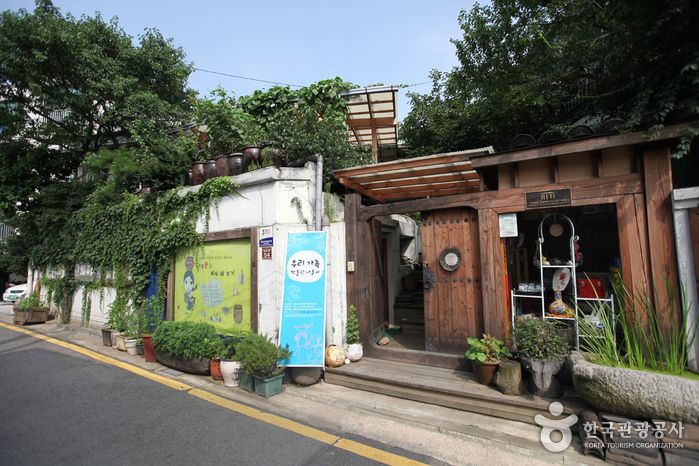
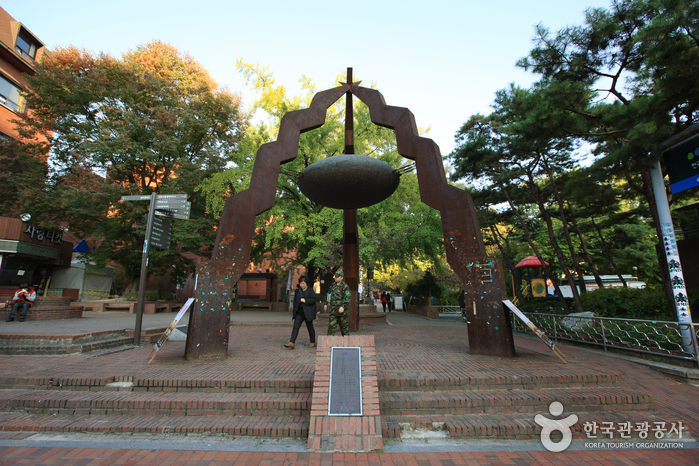
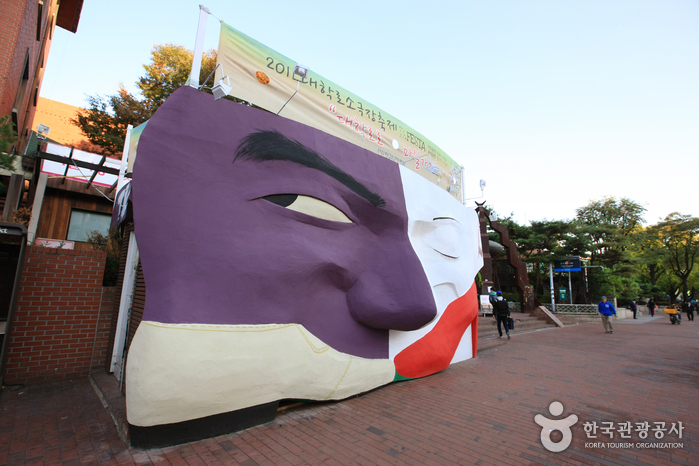
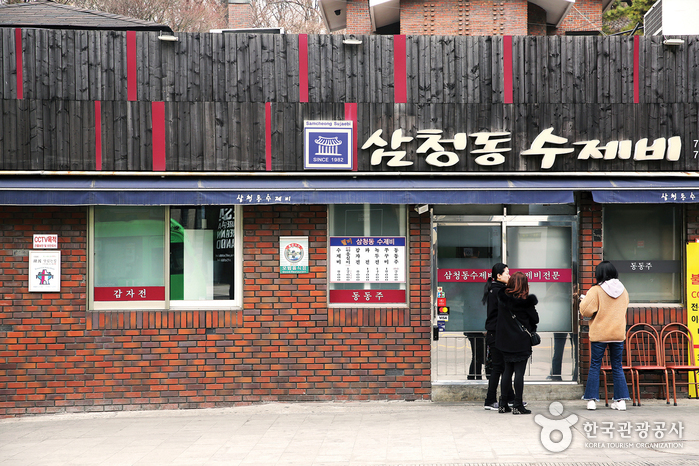
![Bukchonmaru hanok guesthouse [Korea Quality] / 북촌마루한옥게스트하우스 [한국관광 품질인증]](http://tong.visitkorea.or.kr/cms/resource/32/2574032_image2_1.jpg)
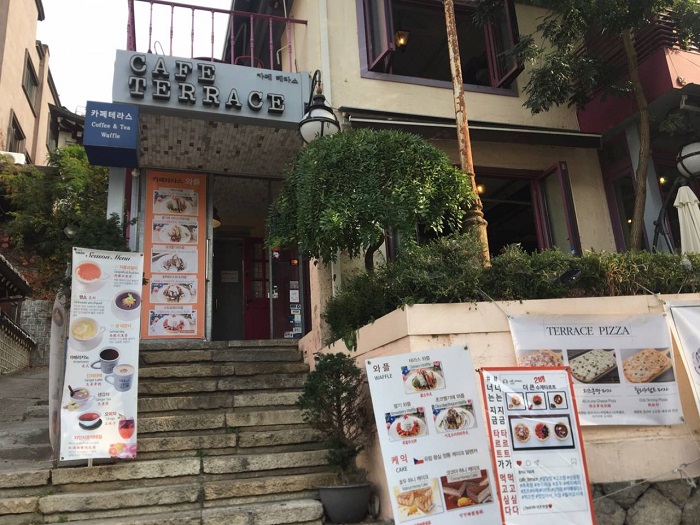
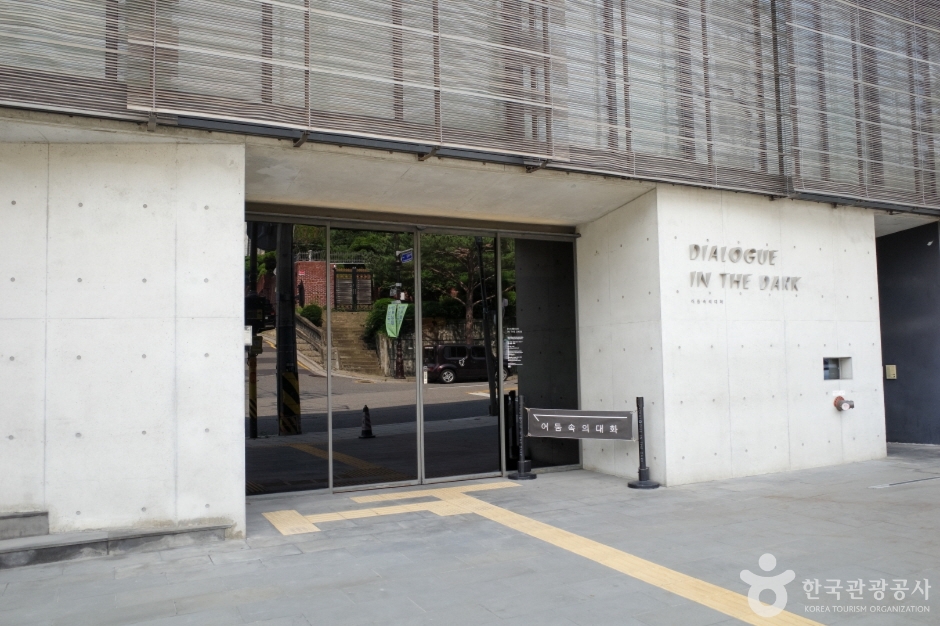
![Seooreung à Goyang (Gyeongneung, Changneung, Hongneung, Ingneung et Myeongneung) [Patrimoine Mondial de l'UNESCO] (고양 서오릉)](http://tong.visitkorea.or.kr/cms/resource/88/1589188_image2_1.jpg)
![Inwoohouse [Korea Quality] / 인우하우스 [한국관광 품질인증]](http://tong.visitkorea.or.kr/cms/resource/64/2633664_image2_1.jpg)
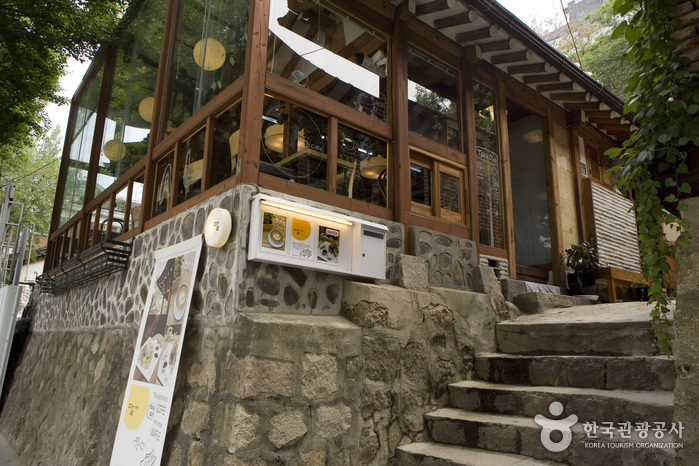
 Français
Français
 한국어
한국어 English
English 日本語
日本語 中文(简体)
中文(简体) Deutsch
Deutsch Español
Español Русский
Русский